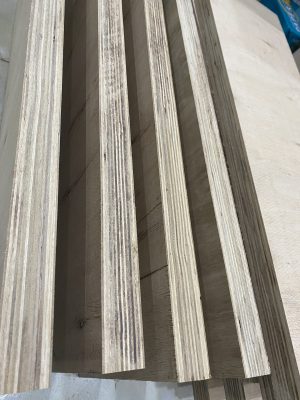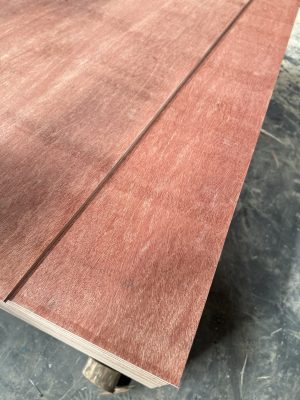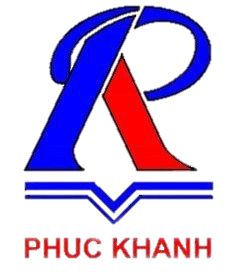Ván ép phủ keo là gì? Cấu tạo, phân loại và ứng dụng
Ván ép phủ keo hay còn gọi ván coppha phủ keo, sử dụng nhiều và thay thế cho ván phủ phim nhầm tối ưu giá thành vật tư xây dựng. Lõi ván bên trong đã được ép keo và toàn thể tấm ván bên ngoài phủ lên một lớp keo, lớp keo này giúp ván chắc chắn, cứng, chống được nước, ẩm, mốc, mối mọt, và khả năng chịu tác động tăng lên. Để hiểu rõ hơn về loại vật liệu này, hãy khám phá cùng Phúc Khánh qua nội dung sau.


Ván ép phủ keo là gì?
Ván ép phủ keo là một trong những loại ván ép hàng đầu hiện nay. Sở dĩ có tên này là vì chúng được ép với nhau bằng keo và phủ bên ngoài một lớp giấy cán keo giúp tạo độ láng, chống nước, giảm trầy xước trong suốt quá trình sử dụng.
Khác với những loại ván ép chuyên dùng cho nội – ngoại thất như ván ép nội thất và ván ép bao bì, loại ván ép này thường được dùng nhiều trong các công trình xây dựng vì nó giúp giảm rất nhiều chi phí nhân công và thời gian thi công. Ứng dụng nhiều nhất là trong việc đổ cốp pha vốn cần các mg cốp pha rời ghép lại vào nhau thành khối để định hình bê tông tươi. Nhờ lớp phủ chống thấm, chống nước bên ngoài và lại dễ dàng cắt xẻ, ghép lại nên luôn nằm trong danh sách ‘cốp pha’ được ưa dùng hàng đầu. Tên tiếng Anh của loại ván ép này là Glue-coated plywood
Cấu tạo của ván ép phủ keo
Cấu tạo của ván ép phủ keo bao gồm các thành phần sau đây:
- Bề mặt: được phủ một lớp keo cao cấp chống nước hiệu quả.
- Lớp ruột: bao gồm nhiều lớp gỗ lót khác nhau được dán bằng các loại keo chuyên dụng, keo phenol chống nước.
- Chất liệu sản phẩm: được làm từ nhiều loại gỗ khác nhau thường là gỗ bạch đàn, gỗ keo, gỗ rừng thông, gỗ cây cao su.
Loại ván ép này được sản xuất với nhiều kích thước khác nhau, độ dày từ 9mm – 25mm tùy vào nhu cầu sử dụng. Ván ép phủ keo được chọn sử dụng nhiều vì sản phẩm có thể tái sử dụng nhiều lần.
Ứng dụng
Nhờ công dụng của mình mà ván ép phủ keo thường được dùng trong xây dựng là chủ yếu. Khi làm cốp pha nếu sử dụng loại ván này sẽ giảm được về mặt chi phí và nhân công – Hai yếu tố rất quan trọng đối với chủ thầu và nhà đầu tư. Khác với các loại cốp pha như thép, composite vốn giá thành cao và thời gian sử dụng không cao. Các sản phẩm do chúng tôi cung cấp có thể tái sử dụng từ 4-6 lần nếu khách hàng dùng kĩ.
Quy trình sản xuất ván ép phủ keo
Là loại ván ép hàng đầu thị trường, không khó hiểu khi nó phải trải qua quy trình kiểm định nghiêm ngặt và chặt chẽ từ khâu chọn lọc nguyên liệu cho đến lúc xuất xưởng. Quy trình sản xuất ván ép gồm bảy công đoạn khác nhau:
1. Chọn lọc nguyên liệu cho nhà máy
Đây là công đoạn khó và mang tính quan trọng cao vì nếu nguyên liệu không đạt thì thành phẩm chắc chắn sẽ không có chất lượng như mong muốn. Loại gỗ được chọn chủ yếu là các loại gỗ cứng, thu hoạch ngắn ngày và phù hợp để làm ván ép như Cao su, Bạch đàn, Điều. Các loại gỗ này được trồng và thu hoạch riêng nên không ảnh hưởng tới môi trường rừng Việt Nam, giúp bền vững về mặt sinh học.
Ở khâu lăn keo thì công đoạn này sẽ phụ thuộc vào từng công ty do chất lượng keo không phải ở đâu cũng giống nhau. Trên thị trường có những loại keo chất lượng phổ thông cho đến tốt như Melamine và những loại keo chuyên dụng cao cấp như Phenol. Nếu dùng keo Melamine sẽ rất tiện nhưng với loại keo Phenol mà SOMMA thường dùng thì sẽ tốn nhiều chi phí hơn, thời gian xử lý cao hơn và cần nhiều ván ép hơn vì loại keo này cần ép rất lâu và có độ nén cao.
2. Chuẩn hóa phôi ván bằng xếp lớp băng chuyền
Nếu phôi ván sắp xếp không kĩ sẽ dẫn đến ván bị lệch, cong hoặc móp méo. Đó là lý do nhà máy nào cũng cần đến băng chuyền để chuẩn hóa phôi ván, hiện nay không còn nhiều người làm thủ công vì tỷ lệ ván thành phẩm đạt chuẩn không cao hoặc gặp sai sót, hư hỏng nhiều.
3. Ép định hình phôi gỗ
Ép định hình phôi gỗ là khâu cần thiết để các lớp ván mỏng liên kết chặt chẽ với nhau, bắt đầu từ ép lạnh và sau đó là ép nóng. Ép lạnh được dùng để định hình các tấm ván, phân bổ keo đồng đều lên bề mặt ván còn ép nóng là để ván gắn chặt với nhau thành một khối.
Xử lý bề mặt phôi ván, chà nhám và cắt cạnh
Ván sau khi ép xong chưa thể trở thành ván thành phẩm ngay được vì cần xử lý sao cho ván được thẳng thớm, bề mặt mịn và được cắt theo kích thước mà khách hàng yêu cầu.
4. Phủ phim lên bề mặt ván
Đây là công đoạn cuối cùng khi ván được phủ một lớp phim lên giúp chống trầy xước, chống nước, chống thấm. Khi hoàn thiện sẽ giúp ván ép này sẵn sàng cho những công việc ngoài công trường khắc nghiệt. Chính vì đặc điểm môi trường Việt Nam vốn nóng ẩm, mưa nhiều nên lớp phim phủ lên phải rất bền vững để tránh những tác động về ngoại lực lẫn thời tiết.
Có những loại ván ép phủ keo nào trên thị trường hiện nay
1. Loại thông thường
Các loại ván ép thông thường được sản xuất theo tiêu chuẩn nhất định. Sản phẩm được làm từ các nguyên liệu gỗ thông dụng như: gỗ thông, gỗ bạch đàn, gỗ keo, gỗ cây cao su cùng các loại gỗ khác. Bề mặt ván ép sẽ được phủ một lớp keo để chống thấm nước hiệu quả.
Các loại ván ép này được ứng dụng rộng rãi trong đời sống,.thường được dùng để chế tạo các vật dụng tiếp xúc nhiều với nước.
2. Loại chống thấm nước
Loại ván ép này được cấu tạo từ nhiều lớp gỗ khác nhau, các lớp.gỗ được dán chặt dưới áp suất cao bằng loại keo chống thấm nước. Thông thường họ sử dụng keo chịu ẩm MR hoặc keo phenol. Đặc biệt, trên bề mặt sản phẩm được lót thêm một lớp keo chống thấm nước rất tốt.
Loại ván ép này chuyên dùng để chế tạo các loại dụng cụ tiếp xúc nhiều với nước như sàn các loại thuyền, tàu, xe container.
3. Các loại bán chạy nhất hiện nay
Ván ép gỗ phủ keo cũng có nhiều tính năng nổi bật nên được sử dụng nhiều trong đời sống. Có thể kể đến một số ưu điểm của các sản phẩm như:
- Được chế tạo đa dạng kích cỡ và phù hợp với nhiều mục đích sử dụng.
- Đa dạng về mẫu mã tiện lợi cho việc lựa chọn.
- Phủ keo nên chống thấm, chống ẩm rất tốt và có độ bền cao.
- Có độ cứng tốt và chịu được lực tác động lớn.
- Giá thấp, tiết kiệm được nhiều chi phí.
